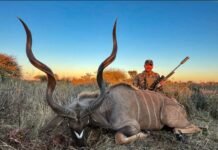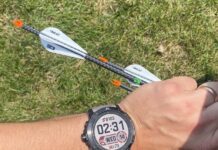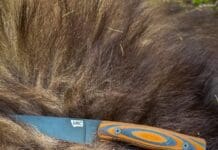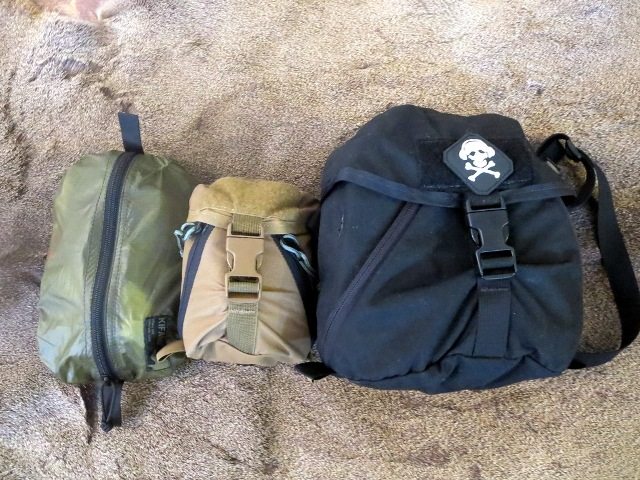
Basic Medical Kits for the Backcountry Hunter
by Todd Kelly, EMR Firefighter
Being a first responder for the last 13 years has allowed me to see and deal with some major life-threatening injuries. It has opened my eyes on how important fast treatment can be when dealing with an emergency. I have always been one to ignore safety in the backcountry and use to think to myself “I’ll just figure it out when the time comes”. But with age I have finally started to take it a little bit more serious. I put together a decent first aid kit to have at my base camp, truck, and pack.
First off, the best first aid kit in the world won’t do any good if you don’t have the proper training. I encourage everyone that uses the backcountry to get some sort of basic training. There are a lot of good one to seven day courses out there that offer some sort of first aid training.
Second, you need to have the proper tools for the job. A first aid kit should encompass the situations you may find yourself in. A first aid kit for trauma will be different from one that might be used during a medical emergency such as anaphylactic shock. So have your kits stocked for what you might encounter, but remember to only stock supplies that you’re trained to use.
There are a lot of pre-made first aid kits out there including some sold as wilderness first aid kits. In my opinion, 90% of the gear supplied in these kits is not useable and they are poorly made. I believe you are better off to design and build your own. You will be more familar with it and find it more useful.
After years of using different medical kits at work, I’ve learned that how your kit opens and lays out is very important. Designed right, that feature greatly aids in the use of the supplies. After doing a lot of research, I found two bags offered by Mystery Ranch that seemed to fit every feature I was looking for, the IFAK and VLAK. They are functional bags that open very easily and lay out flat so everything in the kit is visible. There is lots of storage in the design and they are built like tanks, just like everything else Mystery Ranch makes. For my backpacking kit, I use a Kifaru Ultra Light Pullout.
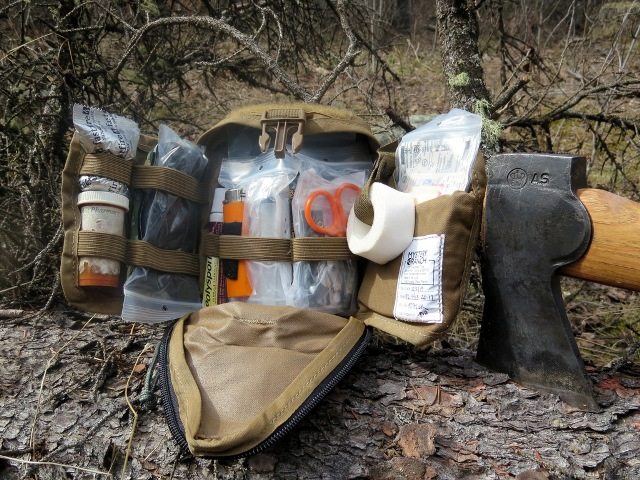
A simple and organized kit is easier to use when the time comes
Below is a list of what I have decided is important to me and the items I pack in my kits. Just remember, you should design your kit for your personal skill level and your needs. Think of the guys you hunt with as they may have special medical issues to consider in your kit’s design. By no means is my kit the end all be all, but it works for me and the guys I hunt with.
Base camp kit contents.
I usually only pack this kit for longer trip when I am setting up a base camp:
• Medical gloves
• Face Shield
• Splinter out
• Polysporin
• Burn kit
• Penaten cream (a trip saver if you have ever had chafing)
• Pepto Bismol chews
• Hand Sanitizer
• Safety pins
• Duct tape
• Tourniquet
• Band Aids (various sizes)
• Steri-Strips
• Tegaderm film
• Saline with eye cup
• Combi pads
• QuickClot
• CotZee
• Medical tape
• Diphen
• Acetaminophen
• Asprin
• Robax
• Nausea meds
• Ibuprofen
• Zantac
• Nyquil
• Tums
• Metronidazole (antibiotic for Giardia)
• Scissors
• Irrigation Kit
• Skin stapler
• Razor blade
• Tweezers
• Super Glue
• Mole Skin
• Israeli Emergency Bandage
• Balsam sap (an old timers antiseptic)
There is also room in the kit to include non-medical items:
• Bic lighter with fire starter
• Stove repair kit
• Gun oil cloths
• Lens cloth
• Spare batteries
• Hoo-Ahhs
• Ear plugs
• Soap
• Toothbrush and paste
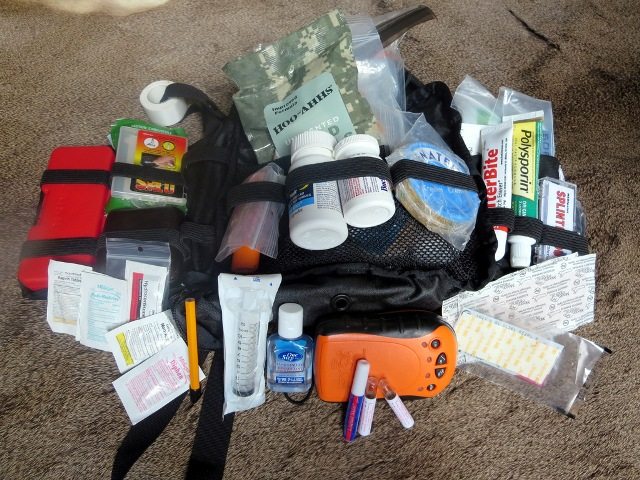
A fully stocked base camp kit provides more options for treatment
My everyday kit is just a smaller version of my base camp kit that I toss into my truck for quick trips into the bush. It lacks some of the non-first aid supplies but will deal with anything from a minor cut, burns, to major trauma from an axe or chainsaw. I also pack this kit for road trips with the family as you never know what you might encounter while on the road.

Even simple chores around camp can cause injuries that left untreated can cause big problems
Backpack Kit
For my backpack kit, I have kept things pretty simple. In the Kifaru pullout, I pack the following supplies sealed in plastic freezer bags:
• QuickClot
• Duct tape (works great as a bandage or blister cover. I find regular bandages don’t last long)
• Tylenol
• Super glue
• Aspirin
• Antiseptic cream
• Visine (for flushing dirt from eyes)
• Metronidazole (antibiotic for Giardia)
I also use the pullout as my kill kit, as the highest chance of injuring myself comes from processing an animal. This simple kit covers most of my needs until I am able to return to my base camp or truck.
Adding a few supplies to your kill kit is an easy way to make a functional first aid kit
The last thing I want to touch on is communication. If you spend any time away from cell service, investing in some sort of GPS communication device such as Inreach, PLB, SPOT, or a satellite phone can really make the difference in a life threatening situation. A little research online can give you many examples of how these communication devices have saved many lives when people are a long way from help. They are not always 100% effective but any chance of them working in an emergency is worth the weight of packing them around.
If you spend any time in the bush, there is no reason not to pack a few supplies. You don’t have to go crazy with a huge kit, but packing a simple one will be worth the money and weight of packing it around if you ever need to use it. Stay safe, hunt hard and hunt smart.
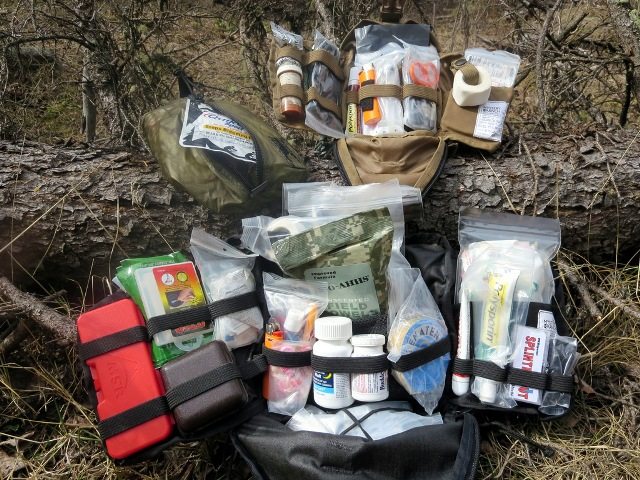
All stocked up and ready to use
You can discuss this article and ask Todd questions here








